
views
X
Research source
Formatting Your Report
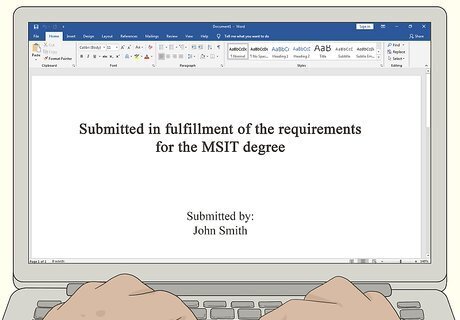
Create a title page for your report. The title page of your report is typically its own separate page, with the report itself following. Apart from the title of your report, the title page typically includes your name, the date, and who you're writing the report for. For example, if you're in school, your title page would include the name of the class you're writing the report for along with your professor or instructor. If you're writing the report for the fulfillment of a particular degree, the title page usually includes language to that effect. For example, you might write "Submitted in fulfillment of the requirements for the MSIT degree."
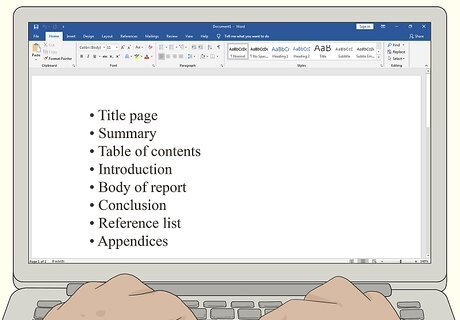
Outline the headings of each section. Some of the headings for an IT report, including the introduction, executive summary, references, and appendices, will be the same regardless of the subject matter of your report. However, for the main body of your report, your headings will reflect the specific issue you've studied. IT reports typically use a standard decimal numbering system. The main sections start at "1.0" and continue consecutively. Sub-sections are labeled "1.1," sub-sub-sections "1.1.1," and so on. Make sure all of your headings have a consistent and parallel structure. For example, if one of your headings was a gerund phrase, such as "Evaluating Information Management Styles," then the rest of your headings should be in the same structure.
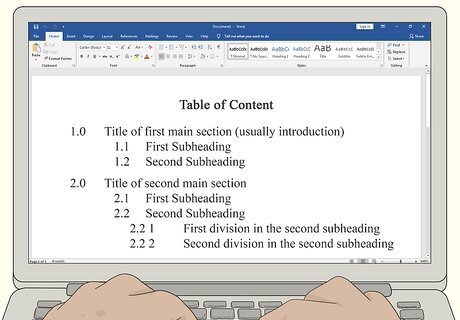
Format your table of contents. Your table of contents includes each of the sections and sub-sections in your report and the page number on which each of them starts. A table of contents makes it easy for your reader to skip around among your sections. Most word-processing programs have a functional template that allows you to automatically generate a table of contents. The table of contents will then update page numbers as you draft or revise your report.
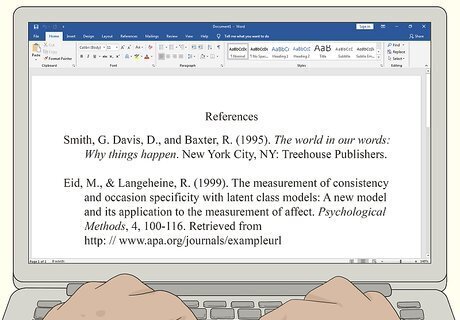
Create your reference list using the appropriate citation method. If you format your references before you start drafting your report, you can plug them in more easily without interrupting your writing. If you have any formatting questions, you can check them now without it feeling like a distraction. If you can't figure out how to format the reference for an unusual source, you might have to stop writing your report and look up the reference in the appropriate style guide or online. If you're in the middle of writing your report, this can end up taking away quite a bit of your time and attention.Tip: At this stage, include all of the potential references you've found in your research. After you write your report, you can delete any sources that you ended up not using.
Drafting Your Report
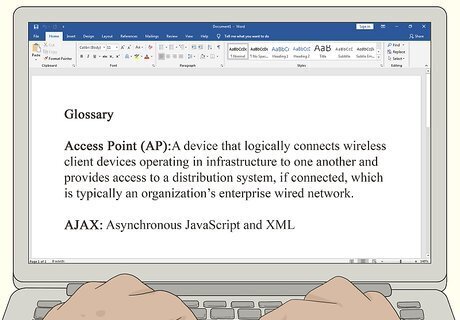
Include a glossary of any abbreviations or technical terms used in your report. List abbreviations, acronyms, and other technical terms of art that you use in your report on a separate page at the start of your report. This way, you don't have to waste space in your report defining these terms. If you haven't actually written your report yet, you might not have a complete list yet. When you start editing your paper, you can go back and add in words that you missed.
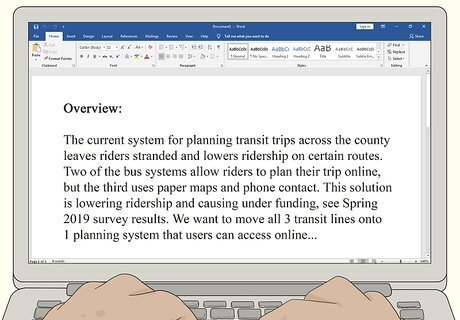
Provide background information in your introduction. The purpose of the introduction is to put your report in context and explain its purpose. You might also include a summary of your research process and the results of your work. Introductions often include a paragraph that outlines the structure of your report. Generally, it's easier to wait and write this paragraph after you've finished your report to ensure its accuracy.
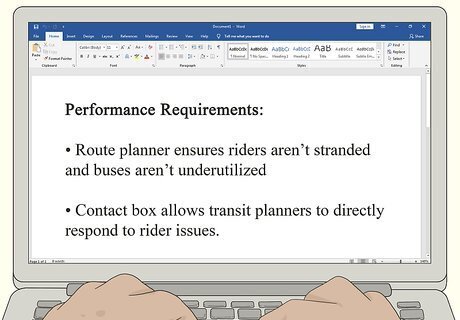
Describe the information and evidence you found. The body of your report consists of sections that present your information along with examples and evidence from your research. Organize this information logically, using appropriate headings and sub-headings that will allow your reader to easily navigate your report. While the bulk of your text should be full paragraphs, you can also break up large slabs of text with bulleted or numbered lists where appropriate.Tip: Including figures and tables helps you more efficiently communicate information so your reader can understand your findings at a glance.
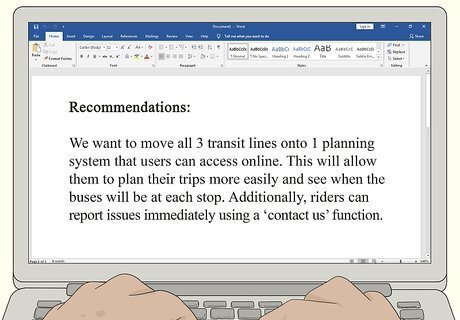
Present recommendations you have based on your findings. Your recommendations will differ based on your audience and the reason you wrote the report. Generally, your recommendations provide specific suggestions for how to implement your conclusions or apply the information you've uncovered through your research. If you're writing in the university setting, your recommendations might include additional questions raised by your findings where further research could be done. If you're writing in the workplace setting, your recommendations would likely include ways for your employer to implement your findings or correct problems you discovered through your research.
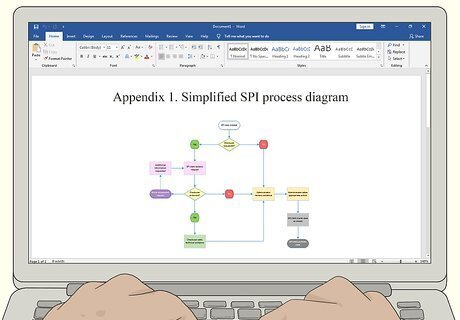
Add appendices with raw data or other details if necessary. Appendices include raw data, detailed drawings, coding, calculations, and other supporting information that didn't fit in your report. You can think of this as information that would require your reader to get "into the weeds" of your report. The information in your appendices may not be of any interest to your average reader, particularly if you're writing in a workplace setting. However, it's information that other researchers would want to study. Appendices are typically given a number or letter and title. When you discuss the information in your text that relates to a particular appendix, use a parenthetical reference to point your readers to it. For example, you might write "Raw data accumulated on social media usage are presented in Appendix 1."
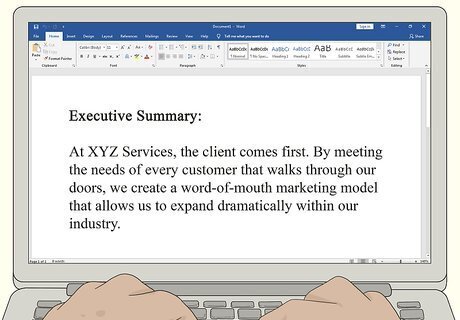
Create the executive summary or abstract last. The executive summary provides a snapshot of your report for busy readers who only want to get the gist of the report without having to read the whole thing. Because it summarizes your report, it's typically easier to write if you wait until after you've finished your report. It can be helpful to jot down information you want to include in the summary as you write your report. For a shorter report, your executive summary will typically only be 100-200 words. At the longest, it can be up to a page. However, it should never be longer than a page.
Making Your Final Edits
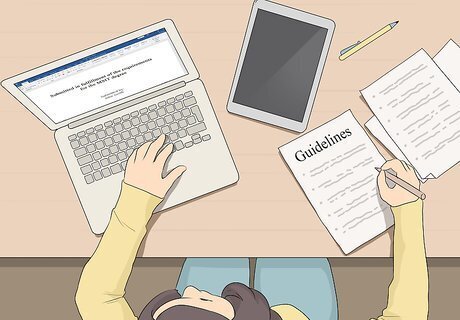
Check your report against the instructions or guidelines you were given. If your instructor or employer had specific objectives for your report, read through your report and make sure it meets all those objectives. If there were specific instructions you were supposed to follow, use them as a checklist to make sure you've fulfilled your assignment. If a particular instruction or guideline proved impossible to follow, you might want to add a sentence or two to your report that acknowledges that it wasn't followed and explains the reason why.
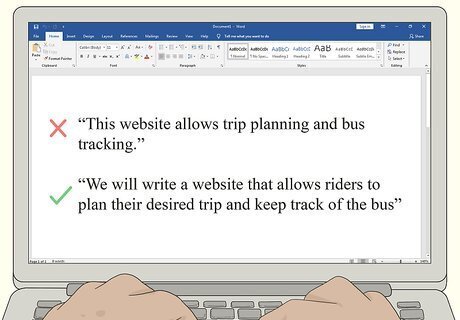
Edit your report for consistency and clarity. Your report should be free of jargon and highly technical terms and easy for the average person to understand. Read your report out loud to identify passages that are difficult to follow. If you find yourself stumbling as you read, that's a sign that you've found an area that could use some work. Make sure the information you present in your report is complete and accurate, with no gaps or assumptions that would cause a reader to question your conclusions or recommendations. Creating an outline from your report (sometimes called a "reverse outline") can help you find gaps.
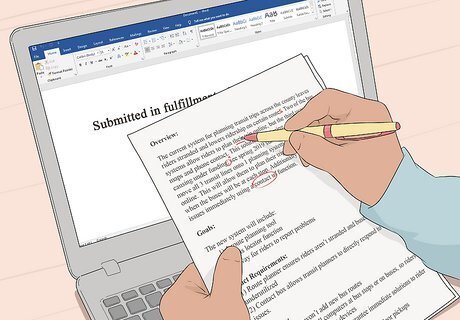
Correct grammar and punctuation errors. Leave proofreading for either the last or next-to-last revision of your report. Every time you revise, you're potentially introducing new errors, which means you'll have to proofread all over again. Read your report slowly, focusing on each sentence by itself. It can also help to start at the end and read backward through one word at a time to catch possible spelling errors. Your word processing program likely has grammar and spell-check. However, do not rely on these alone, because they often miss errors. For example, if you have a homophone spelling error (say, "wave" instead of "waive"), your spell-check wouldn't pick that up because they're both words.

Give your report to at least one other person to check for errors. Because you wrote your report, you're not necessarily the best person to edit it. A fresh pair of eyes will catch things that you might skip over several times. It's a good idea to let at least one person read your report who knows nothing (or next to nothing) about the subject matter of your report. They can point out terms of art or confusing phrases that might have escaped your notice.Tip: If you have acknowledgments in your report, include the names of people who checked your report and offered suggestions to improve it.
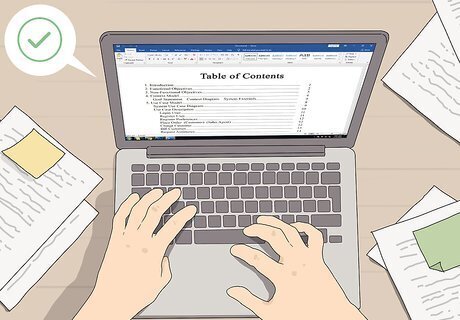
Finalize your table of contents, definitions, and references. When you're done editing, check your table of contents, definitions, and references to make sure they still reflect your report completely. Update these sections of your report to include any additions you made during revisions. Check the punctuation and formatting of your references carefully to make sure it adheres to the style guide you're supposed to follow. If you used an auto-generating template to create your table of contents, double-check the page numbers and make sure they're correct.

Proofread your report at least once more before submitting it. Make proofreading a separate part of your editing process. Ignore the content of your report and focus on the mechanics —the formatting, punctuation, and spelling. Make sure all headings and figures in your report are aligned and formatted consistently. Reading your report backward, one word at a time, will help you focus on the spelling of individual words to correct spelling errors. Reading aloud can help you locate punctuation errors as well as places where your writing isn't as clear as it could be.


















Comments
0 comment